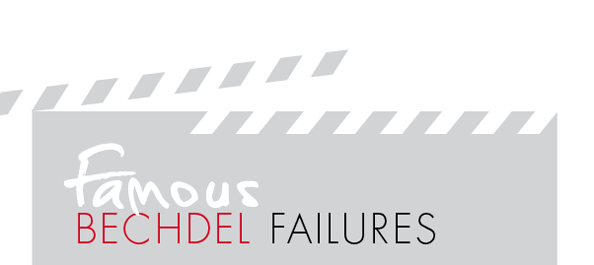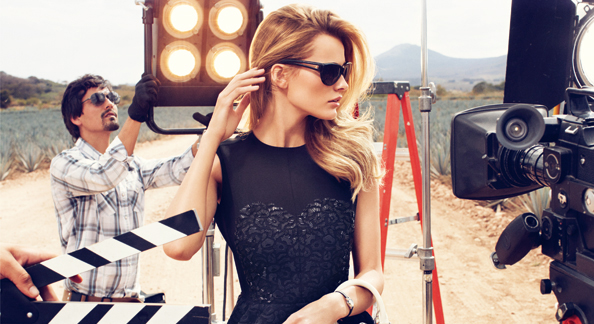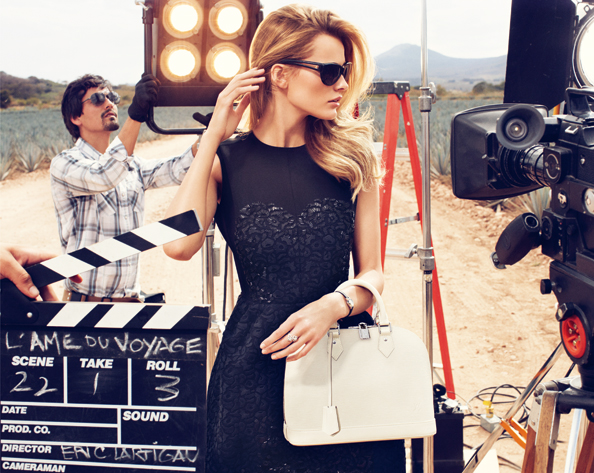In her acceptance speech at the Oscars 2015 Patricia Arquette highlighted sexism in the entertainment industry. Not only do women get paid less than their male counterparts but sidekick, damsel in distress or love seeker are usually the roles that a leading lady lands. However a group of Swedish film execs are trying to stop the rot, and they’ve called on a 28-year-old cartoon for help. Which movie did you see last, and did it pass the Bechdel Test?
Monsters University, Pacific Rim, Anchorman 2. They’ve all got one thing in common: they all fail the Bechdel Test, cinema’s own feminism-o-meter. In November 2014 Sweden took a stand in denouncing the movie industry’s woeful record in gender inequality by officially embracing the Bechdel Test. Four Swedish cinemas and the Scandinavian TV channel Viasat Film incorporated it into some of their ratings – a move championed by the Swedish Film Institute.
Cue a reactive maelstrom as fans, buffs and execs rushed to defend/attack the move. But facts, as you’ll soon discover, don’t lie: the silver screen is as gender-segregated as ever. Can the Bechdel Test stop a rot that’s been setting in for a century? Or is it a straw man for male-dominated entertainment?
First off, it’s handy to know what the Bechdel Test actually is. Fortunately that’s a simple task. According to the test’s three tenets a film must: 1) have at least two women in it, who- 2) talk to each other, about- 3) something besides a man.
It seems simple enough, but barely half of all films pass. The test was less devised than drawn by American cartoonist Alison Bechdel, who conjured it in her 1985 strip Dykes To Watch Out For. Bechdel since cooled on her association with the test, but its thrust has endured as a motif for female filmic subservience. And whether you’re for or against its use as an official yardstick, something’s very wrong with cinema.
It’s assumed that, these days, women have it better in and on film than in the old days. Not so. According to a report by San Diego State University in the USA, among 2012’s 250 top-grossing films, women comprised only 18 per cent of all directors, executive producers, producers, writers, cinematographers and editors. That’s a change of zero from 2011, and just one per cent better than 1998. Male directors outnumber their female counterparts nine-to-one, a figure that hasn’t changed in almost two decades.
At last year’s Academy Awards 140 men were nominated versus 35 women. There were no female nominees for directing, cinematography, film editing, original screenplay or original music score. This year the University of Southern California revealed that the number of speaking roles for women in 2012’s top hundred movies represented the lowest figure in five years. Just six per cent of those films had equal numbers of male and female speaking characters, which is of little surprise considering 78 per cent of films had no women writing on them at all.
At last year’s Empire Film Awards, Dame Helen Mirren used a winning speech to criticise a lack of progress over the years. ”When I first came into the film industry, it was a really blokey world,” she said. But women still comprise half of all movie ticket sales (and, by the way, half the world’s population). What gives?
For all the inactivity behind the camera, not much is changing in front. Roles for women have barely changed since the advent of colour, and a big portion of female roles reduce characters to giggling, chaste schoolgirls carefully placed to tease out a male lead. Hollywood’s infatuation with female sexuality is also a roadblock: in 2012 32.6 per cent of female speaking characters wore sexually revealing clothes, the highest percentage in five years. Over half of teenage characters were dressed provocatively. ”It’s a part of the entertainment industry,” says Oscar-winner Jennifer Lawrence, who has admitted to having turned down roles for which she was asked to slim down. ”Sex sells. And for some disgusting reason young sex sells even more.” What’s more, men write 82 per cent of all film reviews .
”In film there are two types of roles for females,” says British writer and director Samantha Newton. ”The girl who wants the guy or the girl who wants to be the guy. Neither are particularly bad; the problem is that most females simply don’t fit this mould… I’ve come into conflict for writing female characters that, in their strength, weaken the male lead. I don’t know if films are wrong or if society is wrong.”
”Perhaps we’re merely stagnant in our archaic ideas of male and female identity,” adds Newton. ”Little boys want to be Superman, be strong and save Lois Lane; little girls get to dream of their knight in shining armour. It’s hardly inspiring.” Director Rachel Zisser goes a step further: ”When people namedrop Katherine Bigelow, for me it doesn’t matter that she is a woman – she offers more of the same. The things that are missing from films are not just female roles but the attributes of femininity. There are no good roles for women, but there are no good roles for men.”
So what’s the cure? According to some in Sweden’s entertainment hierarchy, the Bechdel Test. The frozen country, home to just over nine million people, has a rich filmmaking history, from directors like Ingmar Bergman and Lasse Hallstrom, to the screen skills of Greta Garbo and Stellan Skarsgard. Sweden also gave the movie industry one of its strongest female leads in years with Lisbeth Salander, the vengeful protagonist of Steig Larsson’s The Girl With The Dragon Tattoo. It’s no surprise the country has moved first with Bechdel’s journeyed trial.
The decision has divided opinion. ”If they want different kinds of movies they should produce some themselves and not just point fingers at other people,” says Tanja Bergkvist, a scientist who blogs on Sweden’s ’gender madness’. The test’s opponents point out that some feminist movies would fail the test. Gravity, 2013’s edgy space thriller starring Sandra Bullock as the lead character, would also have slid beneath the mark, despite harnessing one of the year’s best female roles.
”I think it’s better not to rate movies and put a brand on them, out of just the Bechdel Test,” says Peter Modestij, a writer and director from Stockholm. ”Actually I’m not sure I like the idea of branding culture at all. But I like the idea and the provocation that the test brings, because it’s provoking even to me, as a white male, that so few movies have passed the test.”
Lovisa Siren, a short film director also from Stockholm, agrees: ”I’m always looking for movies with female directors and female protagonists. I’ve had enough with men’s movies. Last night I googled ’best films 2013’, went to The Guardian’s top 10 list and the films were all directed by men with nine out of 10 male protagonists. That needs to be changed.
”I don’t think the Bechdel Test is a fair test of a film’s feminist credentials. For me it’s a comic way to highlight that men are the norm and so few women speak to each other in films.”
”For me, art at its best presents a mirror to society,” says Samantha Newton. ”It’s 2014 and we believe our society is heading in the right direction towards equality. But our mirror says otherwise.”
Perhaps it’s not the most scientific way to deal with on-screen inequity, but there’s little denying the Bechdel Test can change the way we see our entertainment. And besides, better films for women mean more money: a recent study showed that 2013 movies that passed the Bechdel Test fared almost twice as good at the US box office, earning US$4.22bn as opposed to US$2.66bn. If sex sells, then so does feminism.

Some failing blockbusters may not surprise you much. Others will. Here are some bigger Bechdel bungles:
Harry Potter And The Deathly Hallows, Part II: Harry may have met his fair share of female friends and foes. But throughout the pint-sized sorcerer’s final outing, Mrs Weasley calls witch Bellatrix a ‘b***h’. And that’s all the woman-to-woman chat for 130 minutes.
Star Wars (the original trilogy): Throughout George Lucas’ ubiquitous sci-fi quest only three women bag speaking roles: Princess Leia, Aunt Beru and Mon Mothma, none of whom have a conversation.
The Lord Of The Rings Trilogy: Do we blame JRR Tolkien or Peter Jackson? Either way, Middle Earth’s leading females never speak to each other and don’t even meet, for over 10 hours of fantasy.
NB: special mention goes to The Social Network scribe Aaron Sorkin, whose film didn’t just fail the Bechdel Test, but about which he boasted that its female characters acted as ‘prizes’ for the men.
Words: Sean Williams














